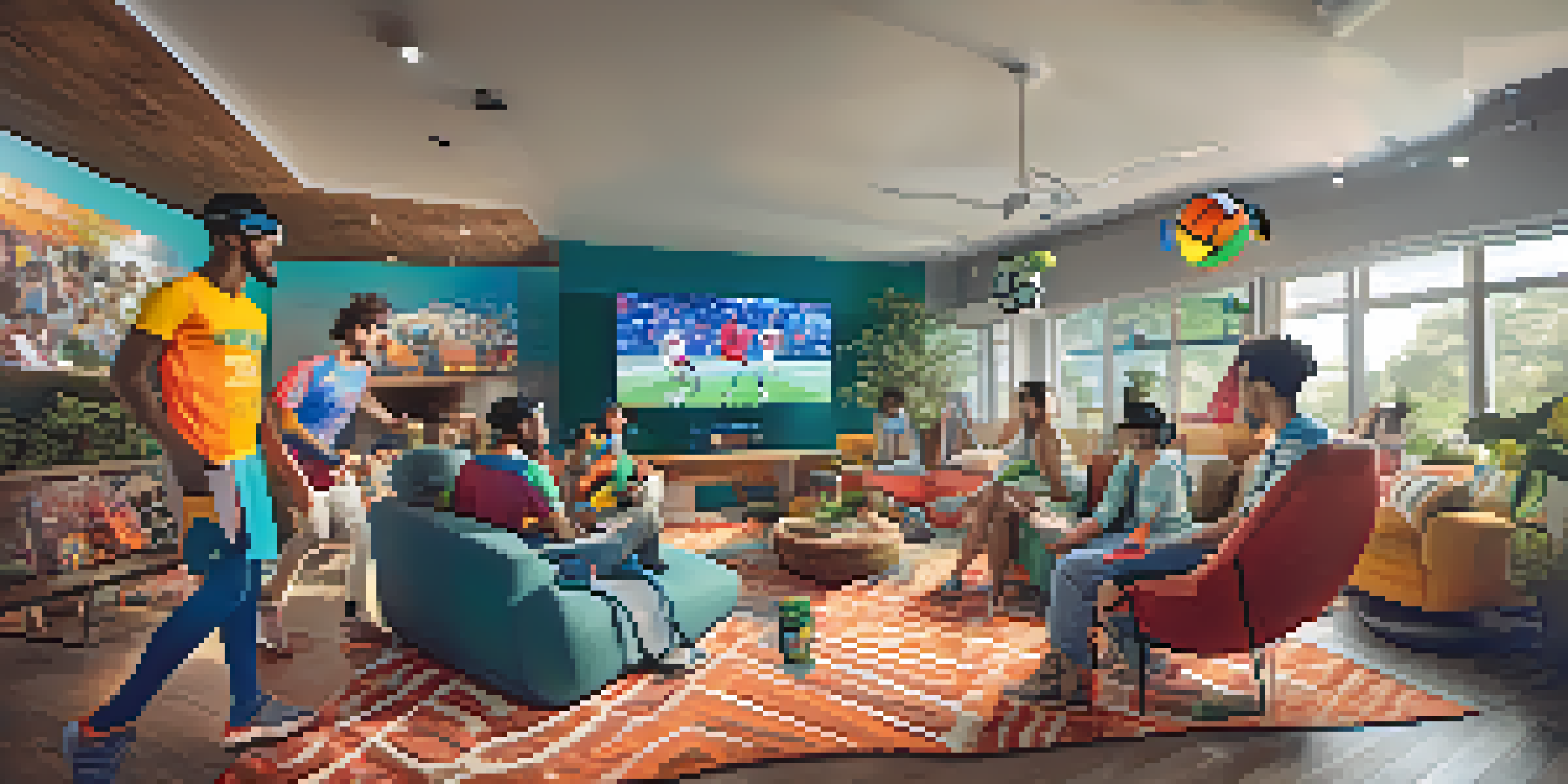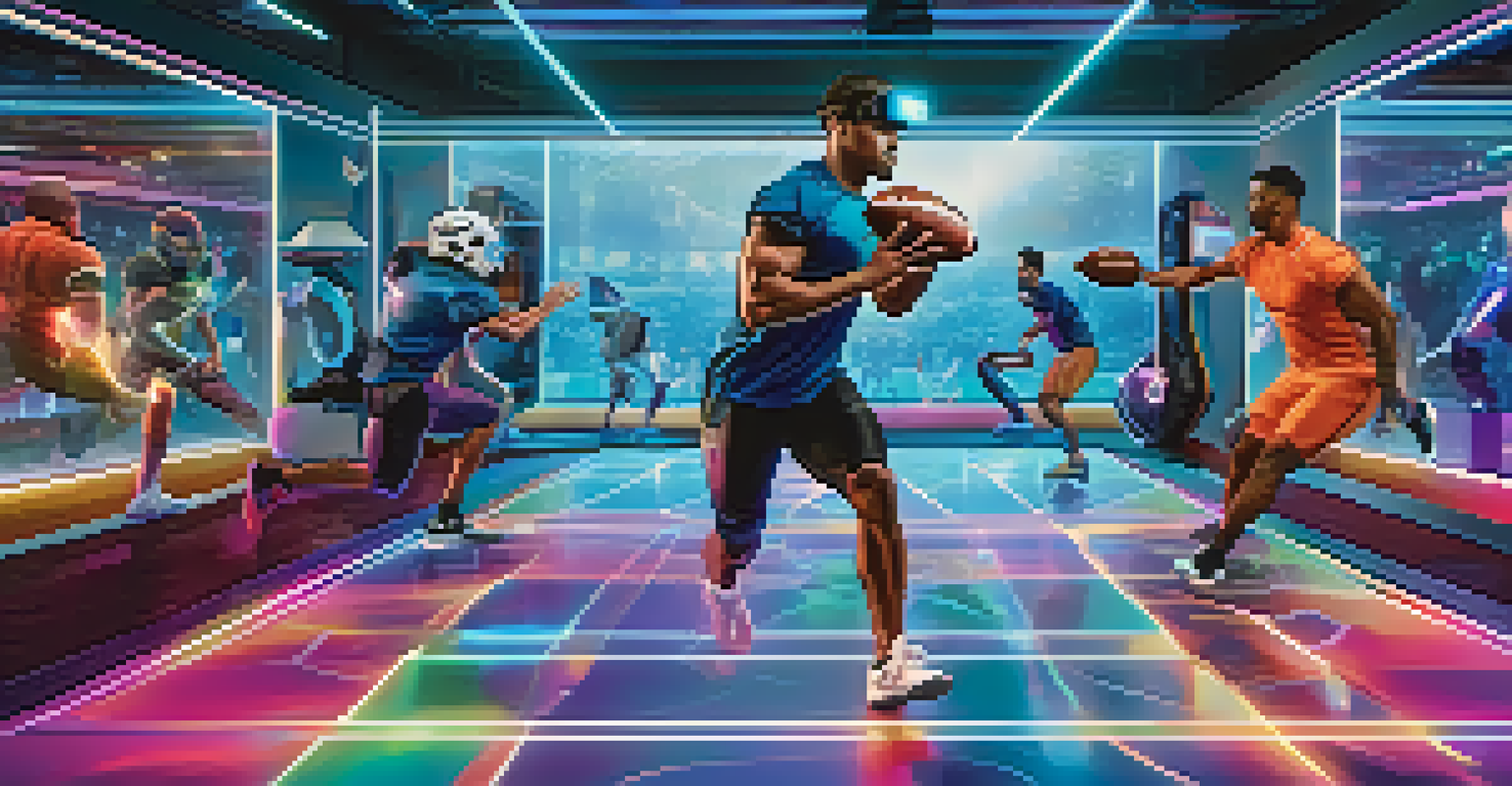How VR Technology is Revolutionizing Live Sports Viewing

Immersive Experiences: A New Dimension for Fans
Imagine being in the front row of a stadium, feeling the energy of the crowd, without leaving your home. Virtual reality (VR) technology is making this possible by creating immersive environments that transport fans right into the heart of the action. This revolutionary approach allows viewers to experience games from angles and perspectives that were once only available to those in attendance.
Virtual reality is the first step in a grand adventure into the landscape of the imagination.
With VR headsets, fans can watch live events as if they were seated in premium seats, making every game feel like a personal experience. This technology mimics the sensations of being there, from the sounds of the crowd to the sight of players making incredible plays. It transforms how we engage with sports, fostering a deeper connection between fans and their favorite teams.
Additionally, VR platforms often include interactive elements, such as replays and statistics, enhancing the viewing experience even further. Fans can pause the action and explore highlights in a way that traditional broadcasting simply cannot offer. This level of engagement creates a new kind of sports fandom, where the viewer is not just a spectator but an active participant.
Connecting Fans Worldwide Through Virtual Gatherings
One of the most exciting aspects of VR technology is its ability to connect fans from around the globe. Imagine being able to watch a game alongside friends and family, even if they are thousands of miles apart. VR makes this possible by creating virtual viewing parties where fans can gather, chat, and cheer for their teams together, regardless of their physical locations.

This communal aspect of VR viewing helps to recreate the social environment of in-person attendance, enhancing the overall excitement of the event. Fans can share reactions in real-time, high-fiving each other in a virtual setting as they witness thrilling moments. This interaction not only strengthens friendships but also builds a sense of community among sports enthusiasts worldwide.
VR Transforms Fan Experiences
Virtual reality allows fans to experience live sports in immersive ways, making them feel like they’re part of the action.
Moreover, VR technology can also host exclusive events, like behind-the-scenes access or player meet-and-greets, which further enhances the connection between fans and their favorite athletes. Such experiences create lasting memories and deepen the loyalty fans feel towards their teams, making sports viewing a much richer experience.
Enhanced Accessibility for All Sports Fans
Accessibility has always been a concern in live sports viewing, especially for fans with disabilities. VR technology is breaking down these barriers by providing alternatives that cater to all audiences. With virtual experiences, fans who cannot physically attend events can still enjoy the thrill of live sports from the comfort of their homes.
Technology is best when it brings people together.
For those with mobility challenges, VR offers a way to experience the excitement of a game without the need to navigate crowded stadiums or deal with transportation issues. This inclusivity ensures that everyone can partake in the joy of sports, fostering a more diverse fan base and enriching the overall sports culture.
Additionally, VR can provide customizable viewing experiences, allowing fans to choose their preferred angles and perspectives. This means that everyone, regardless of their situation, can enjoy the game in a way that suits their needs. By prioritizing accessibility, VR technology is making sports more inclusive than ever before.
Revolutionizing Sports Highlights and Replays
In the fast-paced world of sports, highlights and replays are crucial for fans wanting to catch every thrilling moment. VR technology enhances this aspect by providing immersive highlight experiences that allow viewers to relive key plays like never before. Instead of just watching a flat screen, fans can step into the action and experience the intensity of their favorite moments.
These VR highlights can be viewed from multiple angles, allowing fans to appreciate the skill and strategy involved in each play. Whether it's witnessing a game-winning goal or a spectacular touchdown, the 360-degree view offered by VR brings a new layer of excitement to sports highlights. It's like being on the field, feeling the adrenaline and energy of the moment.
Global Connections Through VR
VR technology enables fans to gather virtually, fostering community and shared experiences regardless of physical distance.
Moreover, with the integration of VR into sports apps, fans can easily access these highlights at their convenience. This not only keeps fans engaged but also cultivates a deeper understanding of the game. By revolutionizing how we watch highlights, VR technology enhances our appreciation for the sports we love.
The Impact of VR on Sports Broadcasting
As VR technology continues to evolve, it is transforming the landscape of sports broadcasting. Traditional broadcasts are now complemented by immersive VR experiences that allow fans to engage with the content in unique ways. This shift not only enhances the viewer experience but also opens new avenues for broadcasters to attract and retain audiences.
For instance, networks can offer VR streams of live events, providing fans with options that go beyond traditional TV. This innovation allows broadcasters to reach tech-savvy audiences who crave new ways to experience sports. It creates a competitive edge in an industry that is constantly seeking to innovate and retain viewers.
Additionally, advertisers are jumping on this trend, leveraging VR to create interactive commercials and sponsored content that captivates audiences. This new form of advertising aligns with the immersive experience fans are seeking, making it more engaging and memorable. The combination of VR and broadcasting is paving the way for the future of sports viewing.
Virtual Reality Training for Athletes
While VR is enhancing the viewer experience, it’s also making waves in athlete training. Coaches and players are using virtual reality to simulate game scenarios, allowing them to practice and strategize without the physical toll of traditional training. This innovative approach helps athletes refine their skills and decision-making abilities in a controlled environment.
For example, quarterbacks can practice their throws by simulating different defensive setups, while basketball players can rehearse plays against virtual opponents. This method not only saves time but also reduces the risk of injury, as players can engage in high-pressure situations without the wear and tear of physical practice.
Inclusive Access to Sports
VR breaks down barriers for fans with disabilities, providing customizable viewing experiences that cater to a diverse audience.
Moreover, VR training can be tailored to individual athlete needs, offering personalized feedback and analysis to help them improve. As technology continues to advance, the potential for VR in sports training will only grow, ultimately enhancing performance and pushing the boundaries of athletic achievement.
Looking Ahead: The Future of VR in Sports
As we look to the future, the potential of VR technology in sports is both exciting and expansive. Innovations are constantly emerging, and we can expect further enhancements in how we experience live sports. From more realistic graphics to improved accessibility features, the possibilities are endless.
With the integration of augmented reality (AR) alongside VR, fans could see a blend of virtual elements with the real world. Imagine watching a game and having real-time stats and player information displayed right in your field of vision. This hybrid approach could redefine our interactions with sports, making them even more engaging and informative.

As VR technology becomes more mainstream, it will likely become a staple in the sports industry, transforming how we watch, engage with, and even train for our favorite games. The revolution has only just begun, and the future holds incredible promise for fans and athletes alike.